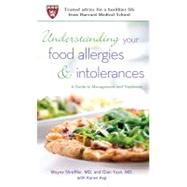
Dr. Wayne Shreffler MD, PhD, specializes in Allergy & Immunology and is a pediatrician atthe Director of the Food Allergy Center and Section Chief of Pediatric Allergy / Immunology at Massachusetts General Hospital in Boston. He’s been done an active NIH-funded researcher in the field of allergic diseasesfood allergy and asthma for several years at the Jaffe Food Allergy Center / Mount Sinai Hospital and since 2009 at MGH, where he is currently the Principal Investigator of several studies on food allergy. Dr. Shreffler is a Fellow of the American Academy of Allergy, Asthma and Immunologyat both NIH and American Academy of Allergy, Asthma & Immunology.
Qian Yuan MD, PhD specializes in Pediatric Gastroenterology and Nutrition, and is the Clinical Director of the Food Allergy Center at Massachusetts General Hospital in Boston, Massachusetts. Dr. Yuan is actively involved in several clinical studies on food allergies, particularly on eosinophilic esophagitis. He is a member of the North American Society for Pediatric Gastroenterology, Hepatology and Nutrition, and a fellow of the American Academy of Pediatrics.
Karen Asp is a freelance writer who specializes in fitness, health and nutrition. She’s a contributing editor for Woman’s Day and writes for numerous other publications, including Better Homes and Gardens, Glamour, Men’s Fitness, Natural Health, O: The Oprah Magazine, Prevention, Real Simple, Redbook, Runner’s World, Self, Spa, Weight Watchers and Women’s Health.
ABOUT HARVARD MEDICAL SCHOOL
With more than 11,000 faculty members and 17 affiliated hospitals and institutions, the Harvard Medical School at Harvard University has the largest medical school faculty in the world. Through its Harvard Health Publications division it brings authoritative, trustworthy, and empowering health information to the public, including its blog at www.health.harvard.edu/blog.
The New copy of this book will include any supplemental materials advertised. Please check the title of the book to determine if it should include any access cards, study guides, lab manuals, CDs, etc.
The Used, Rental and eBook copies of this book are not guaranteed to include any supplemental materials. Typically, only the book itself is included. This is true even if the title states it includes any access cards, study guides, lab manuals, CDs, etc.